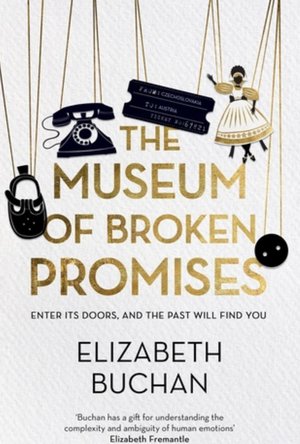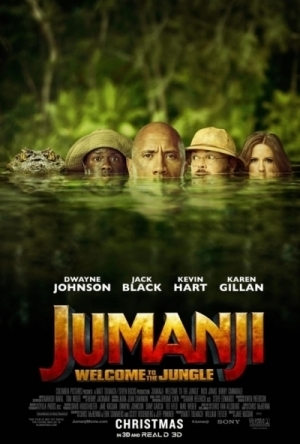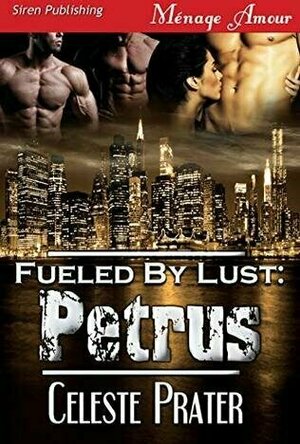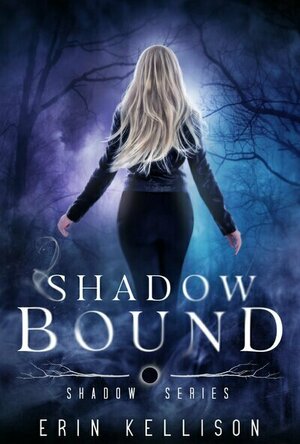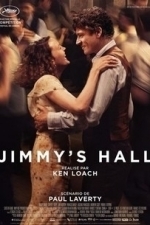Search
Search results
Cori June (3033 KP) rated Handbook for Mortals (Handbook for Mortals #1) in Books
Dec 3, 2018
For a first book it's not too bad. I enjoyed the book it was a fast and easy read. Mac and Tad are my favorite characters because I could see real people in them. Zade, she is still trying to find her way in the world. there's not much magick until near the end of the book. Mostly it expands on the ' normal' life Zade wants. While there is a love triangle there isn't much interaction between Zade and Jackson. There are a few typos and a bit of redundancy in the book, and yes, some times it seems almost like product placement and name dropping in some parts. However, with the name dropping they are in Vegas and she is in the business it is kinda expected. the slight product placement.... meh i could be reading too much into it So, by now you're wondering why the three stars and not say two or the more popular one. What can I say it sucked me in. I liked that the chapters where named after Tarot cards. The interaction between characters wasn't forced and I was ok that she second guessed herself as it didn't get to be whiny. For all that she couldn't stand if someone didn't like her. It is good for a fast empty headed read. I also want to see how/if the author and characters grow in the sequel.

Frim: meet new people
Social Networking and Lifestyle
App
Frim helps you to meet real people nearby. You can make new friends, meet locals while you travel or...
Andy K (10823 KP) rated Vox Lux (2018) in Movies
Sep 18, 2019
Black Swan 2: The Return of Durant
In 1999, a middle school teenager Celeste has survived a horrific school shooting which has left multiple students and teacher dead. Through tragedy, the wounded girl triumphs through the singing of a tribute song which goes viral and becomes an anthem for heartbreak throughout the world.
She achieves instant success with her song, so much so, she gets a recording contract and her and her sister are whisked away to Sweden to record it officially and make a music video. Her manager chaperones her time there, but does not have much success. The girls have a good time partying and choosing every excess including the consequences. The video is a success and she becomes a star.
Eighteen years later, the aging pop star is trying to make a comeback and show she can still keep up. Her relationships with her sister, teenage daughter and sister as she has lived the ego-driven life of a celebrity now for too long. One the eve of a concert performance, another massive multi-person shooting happens at a beachfront, the perpetrators donning masks used in one of her videos making her the target of paparazzi and media scrutiny at a pivotal time in her life.
She tries to salvage her relationship with her daughter who is going through her own teenage angst with mixed success. It seems she is her own worst enemy questioning her choices and continuing leading the lifestyle of a demanding celebrity.
The movie seems like a tale of two halves with the teenage Celeste and the "grown up" version even having screen captures saying so. For me the first half was way more interesting than the second. The teenage Celeste was more believable, maybe because you didn't know her, but the screenplay was more interesting for her as well.
One can only imagine the emotions of having to live through such a tragedy and having to rebuild your life afterwards. Then adding on top of it, her instantaneous global stardom could not have done well to heal her physical, but emotional scars as well.
I felt Natalie Portman seemed out of place and her acting felt very wooden and dry to me unlike most of her portfolio. She even was an executive producer on the film along with her costar Jude Law, so she may have been focused on that instead of her acting performance. She doesn't appear in the film until close to an hour in and filmed her scenes over 10 days. It is unfortunate, but I really didn't believe her and took me out of several scenes as a result.
It is hard to empathize with the celebrity lifestyle of excess and demands having never lived it myself. It has certainly been portrayed onscreen much better than it is here and it really felt like the two halves of the film were disconnected and not resolved.
I certainly don't mind, or even encourage, the vague open-ended type of film generally speaking if it is left you to think about the plight of the characters their decisions, and ultimate destinations; however, this film accomplishes this only through bad writing.
The concert footage was well done and Portman certainly delivered on transforming into a Madonna/Britney Spears type icon. I was just hoping for more of a payoff and felt disappointed in the end.
She achieves instant success with her song, so much so, she gets a recording contract and her and her sister are whisked away to Sweden to record it officially and make a music video. Her manager chaperones her time there, but does not have much success. The girls have a good time partying and choosing every excess including the consequences. The video is a success and she becomes a star.
Eighteen years later, the aging pop star is trying to make a comeback and show she can still keep up. Her relationships with her sister, teenage daughter and sister as she has lived the ego-driven life of a celebrity now for too long. One the eve of a concert performance, another massive multi-person shooting happens at a beachfront, the perpetrators donning masks used in one of her videos making her the target of paparazzi and media scrutiny at a pivotal time in her life.
She tries to salvage her relationship with her daughter who is going through her own teenage angst with mixed success. It seems she is her own worst enemy questioning her choices and continuing leading the lifestyle of a demanding celebrity.
The movie seems like a tale of two halves with the teenage Celeste and the "grown up" version even having screen captures saying so. For me the first half was way more interesting than the second. The teenage Celeste was more believable, maybe because you didn't know her, but the screenplay was more interesting for her as well.
One can only imagine the emotions of having to live through such a tragedy and having to rebuild your life afterwards. Then adding on top of it, her instantaneous global stardom could not have done well to heal her physical, but emotional scars as well.
I felt Natalie Portman seemed out of place and her acting felt very wooden and dry to me unlike most of her portfolio. She even was an executive producer on the film along with her costar Jude Law, so she may have been focused on that instead of her acting performance. She doesn't appear in the film until close to an hour in and filmed her scenes over 10 days. It is unfortunate, but I really didn't believe her and took me out of several scenes as a result.
It is hard to empathize with the celebrity lifestyle of excess and demands having never lived it myself. It has certainly been portrayed onscreen much better than it is here and it really felt like the two halves of the film were disconnected and not resolved.
I certainly don't mind, or even encourage, the vague open-ended type of film generally speaking if it is left you to think about the plight of the characters their decisions, and ultimate destinations; however, this film accomplishes this only through bad writing.
The concert footage was well done and Portman certainly delivered on transforming into a Madonna/Britney Spears type icon. I was just hoping for more of a payoff and felt disappointed in the end.
Ivana A. | Diary of Difference (1171 KP) rated The Museum of Broken Promises in Books
Apr 20, 2020
I am so excited to be part of the Book Buzz for The Museum of Broken Promises by Elizabeth Buchan. This lovely book is out on 02nd April, so don’t forget to grab your copy!
This book is quite emotional and heart-breaking from the very beginning until the very end. Based in Europe, in two timelines between now and 1985, we are witnesses to cold war, politics, fight for freedom and an extraordinary love story.
Today, Laure is living in Paris and she owns The Museum of Broken Promises - a place of wonder and sadness. Every object in the museum has been donated and each represents a moment of grief or terrible betrayal. Laure also has hidden objects of her own in there, from her own youth.
Back in 1985, Laure is in Prague, running away after her dad suddenly passes away. But her life here is very confusing. She is struggling to comprehend the dark politics that are taking over the city. But then she meets a young musician. And her love for him is forbidden and causes trouble and terrible consequences.
It is only years after having created the museum that Laure can finally come to terms with her past and celebrate the love she is feeling!
My Thoughts:
This is a very emotional book and I have learned that I need to be in a certain mood in order to be able to fully appreciate it. This is one of those books that leaves a tiny mark in your heart that you will always carry with you.
The story is amazing, we are witnessing a great life full of memories and stories of love, fight for freedom, betrayals, fears, ups and downs. It is so realistic that will make you shiver at times.
I have to admit, I found myself slightly confused at the beginning, trying to figure out which timeline I am currently in, but after a few chapters, I am able to make a difference and get a clearer picture of the story.
I loved the idea of this Museum of Broken Promises. It made me think of what object I could maybe leave there to represent my grief.
I have to admit, I didn’t truly connect with Laure as a main character. She seemed too closed in her own world and her sharing her story in the way that she did was very contradicting to me.
I loved Tomas though. He was my absolute favourite, the hero of this book.
This book is quite emotional and heart-breaking from the very beginning until the very end. Based in Europe, in two timelines between now and 1985, we are witnesses to cold war, politics, fight for freedom and an extraordinary love story.
Today, Laure is living in Paris and she owns The Museum of Broken Promises - a place of wonder and sadness. Every object in the museum has been donated and each represents a moment of grief or terrible betrayal. Laure also has hidden objects of her own in there, from her own youth.
Back in 1985, Laure is in Prague, running away after her dad suddenly passes away. But her life here is very confusing. She is struggling to comprehend the dark politics that are taking over the city. But then she meets a young musician. And her love for him is forbidden and causes trouble and terrible consequences.
It is only years after having created the museum that Laure can finally come to terms with her past and celebrate the love she is feeling!
My Thoughts:
This is a very emotional book and I have learned that I need to be in a certain mood in order to be able to fully appreciate it. This is one of those books that leaves a tiny mark in your heart that you will always carry with you.
The story is amazing, we are witnessing a great life full of memories and stories of love, fight for freedom, betrayals, fears, ups and downs. It is so realistic that will make you shiver at times.
I have to admit, I found myself slightly confused at the beginning, trying to figure out which timeline I am currently in, but after a few chapters, I am able to make a difference and get a clearer picture of the story.
I loved the idea of this Museum of Broken Promises. It made me think of what object I could maybe leave there to represent my grief.
I have to admit, I didn’t truly connect with Laure as a main character. She seemed too closed in her own world and her sharing her story in the way that she did was very contradicting to me.
I loved Tomas though. He was my absolute favourite, the hero of this book.
Andy Meakin (5 KP) rated Jumanji: Welcome to the Jungle (2017) in Movies
Jul 11, 2018
Welcome back to Jumanji
How dare they make a sequel/remake/reboot of Jumanji? I mean that film was a classic. Admittedly a very average classic that doesn’t really live up to your childhood memory of it, but still. And, yeah, Zathura was a kind of remake given it was adapted from a book by the same writer and explored the same themes, but nobody watched that, so how dare they do a new Jumanji film? I mean it’s only 22 years since the original came out!
Do you find yourself agreeing with any of that little rant? If you do, then I have a few things to say. First, accept that for thousands of years similar tales have been retold to new generations to keep the spirit of a story alive. Second, why not actually wait to see what the new film has to offer before casting judgement as Jumanji: Welcome to the Jungle actually serves well as a sequel to the first film, whilst doing something new with the idea.
Starting in the mid-90s, and the board game is unearthed on a beach. Given to a teenage kid by his father, the kid isn’t impressed as ‘nobody plays board games these days’, and he gets back to playing on his console. Overnight, reacting to the changes in gaming culture the box works some magic, and the next day the game has morphed to a video game format, to entice a new generation. Jump forward to present day and a group of unlikely teenagers are cast together in detention when they happen upon the abandoned game console. Taking a break from their junk-room sorting, they fire up the game and find themselves pulled into the game -world, each taking on the avatar of the character template they chose on load up. Presented with a quest in true video-game fashion, they set off to find a way to escape, whilst learning something about themselves in the process.
By transitioning to a video-game setting, the story allows for a great deal of fun to be had poking at the contrivances and conventions of the format, especially for games of the era in which the game was inspired. The characters all have strengths and weaknesses, the spawning of lives by dropping from the sky is so reminiscent of many a side-scrolling platform shooter of yesteryear. Even the behaviour of the NPC – I mean support cast – is perfectly drawn upon the mannerisms that game characters act, being there to spout random exposition to move you on your quest. As for the quests – yep, they are pointlessly complicated, filled with traps and red herrings.
But such pokes at video game culture would be wasted if the casting was wrong, but in the four main stars they have cast the perfect personae for each archetype. The heroic, strong and smouldering hero, who is being played by a soft heated geek – The Rock of course. You want a ‘Lara Croft’ style action heroine, albeit played by a socially awkward teen girl – enter Karen Gillan. Weak sidekick who is only there to carry equipment, but being played by a high school jock who thinks he can do anything – Kevin Hart is your man. Round that off with a studious professor type, being played by a female – that kind of comic role works well for Jack Black. Each of the stars cast has a lot of fun playing with there archetypes, and the film does them all justice to allow them to each have their moments to shine. Gillan, in particular, does a great job at looking entirely awkward yet confident at the same time, and her nerdy seduction scene showcases a comic timing ability equal to her action talents showcased in the GotG films.
The action is thrilling, the humour well placed, and the direction solid enough to bring this video game movie to life. In fact, this is one of the best video game movies to date, even though it isn’t even adapted from a real video game. A few nods to the original Jumanji are present, but without awkwardly placed. The end result is a fun family adventure with some great action set pieces and a wry humour, much like the original was. Don’t let nostalgia for the original put you off exploring the world of Jumanji once more.
Do you find yourself agreeing with any of that little rant? If you do, then I have a few things to say. First, accept that for thousands of years similar tales have been retold to new generations to keep the spirit of a story alive. Second, why not actually wait to see what the new film has to offer before casting judgement as Jumanji: Welcome to the Jungle actually serves well as a sequel to the first film, whilst doing something new with the idea.
Starting in the mid-90s, and the board game is unearthed on a beach. Given to a teenage kid by his father, the kid isn’t impressed as ‘nobody plays board games these days’, and he gets back to playing on his console. Overnight, reacting to the changes in gaming culture the box works some magic, and the next day the game has morphed to a video game format, to entice a new generation. Jump forward to present day and a group of unlikely teenagers are cast together in detention when they happen upon the abandoned game console. Taking a break from their junk-room sorting, they fire up the game and find themselves pulled into the game -world, each taking on the avatar of the character template they chose on load up. Presented with a quest in true video-game fashion, they set off to find a way to escape, whilst learning something about themselves in the process.
By transitioning to a video-game setting, the story allows for a great deal of fun to be had poking at the contrivances and conventions of the format, especially for games of the era in which the game was inspired. The characters all have strengths and weaknesses, the spawning of lives by dropping from the sky is so reminiscent of many a side-scrolling platform shooter of yesteryear. Even the behaviour of the NPC – I mean support cast – is perfectly drawn upon the mannerisms that game characters act, being there to spout random exposition to move you on your quest. As for the quests – yep, they are pointlessly complicated, filled with traps and red herrings.
But such pokes at video game culture would be wasted if the casting was wrong, but in the four main stars they have cast the perfect personae for each archetype. The heroic, strong and smouldering hero, who is being played by a soft heated geek – The Rock of course. You want a ‘Lara Croft’ style action heroine, albeit played by a socially awkward teen girl – enter Karen Gillan. Weak sidekick who is only there to carry equipment, but being played by a high school jock who thinks he can do anything – Kevin Hart is your man. Round that off with a studious professor type, being played by a female – that kind of comic role works well for Jack Black. Each of the stars cast has a lot of fun playing with there archetypes, and the film does them all justice to allow them to each have their moments to shine. Gillan, in particular, does a great job at looking entirely awkward yet confident at the same time, and her nerdy seduction scene showcases a comic timing ability equal to her action talents showcased in the GotG films.
The action is thrilling, the humour well placed, and the direction solid enough to bring this video game movie to life. In fact, this is one of the best video game movies to date, even though it isn’t even adapted from a real video game. A few nods to the original Jumanji are present, but without awkwardly placed. The end result is a fun family adventure with some great action set pieces and a wry humour, much like the original was. Don’t let nostalgia for the original put you off exploring the world of Jumanji once more.
Merissa (13555 KP) rated Petrus (Fueled By Lust #12) in Books
Oct 30, 2019
Petrus is the twelfth book in the Fueled by Lust series, and I would certainly recommend you read them in order. Not only will that give you a better understanding of the overall story arc, but you will get to meet the characters in greater detail, helping you to know them more.
Petrus was one of the unfortunate Insedi who had a faulty necklace. This meant that when he kissed Ireland for the first time, nothing happened, much to his distress. Ireland, of course, knows nothing about the Insedi or necklaces, so she wondered what the hell was going on. To try and protect her, Petrus was cruel to be kind, which then backfired when he found out about the faulty necklaces. So now he has to try and coax her back to him.
I love this series, I really do. I have loved each and every one of the Insedi warriors, and this book is no different in that regard. What I didn't love as much were the other men in this. I can sort of understand Ludo, especially once you learn of the near-miss between him and Ireland, although I much preferred Makar and Baruch because they were already a 'couple' (so to speak). It was Damon who didn't do it for me though. I loved how it was written with a human being included into a triad but I would have loved more from him during the book. He was there at the beginning, bam, I love you's to Ireland, but then he disappears until near the end. One evening (or so it seemed) and he's into the triad, now quadrat! And then throw in the BDSM elements that Petrus and Ludo are happy for him to take the lead on... I don't know. It just didn't feel right to me, and I pains me to write that!
There were no errors in this book that disrupted my reading, and I found myself to be just as lost within the Insedi world as ever. It just didn't move in the same way as the previous books have. And Cato is still hands-down my favourite!!!
Would I recommend this book? Absolutely! Because it is part of an amazing world full of interesting and intriguing characters. It isn't just the warriors who will delight you, but their partners too. Trust me, the women are just as badass in their own ways, and Makenna and Ireland's quips and witticisms to each other were fantastic to read. So yes, I recommend it. Just start from the beginning and you will love the Insedi just as much as I do!
* A copy of this book was provided to me with no requirements for a review. I voluntarily read this book, and the comments here are my honest opinion. *
Merissa
Archaeolibrarian - I Dig Good Books!
Petrus was one of the unfortunate Insedi who had a faulty necklace. This meant that when he kissed Ireland for the first time, nothing happened, much to his distress. Ireland, of course, knows nothing about the Insedi or necklaces, so she wondered what the hell was going on. To try and protect her, Petrus was cruel to be kind, which then backfired when he found out about the faulty necklaces. So now he has to try and coax her back to him.
I love this series, I really do. I have loved each and every one of the Insedi warriors, and this book is no different in that regard. What I didn't love as much were the other men in this. I can sort of understand Ludo, especially once you learn of the near-miss between him and Ireland, although I much preferred Makar and Baruch because they were already a 'couple' (so to speak). It was Damon who didn't do it for me though. I loved how it was written with a human being included into a triad but I would have loved more from him during the book. He was there at the beginning, bam, I love you's to Ireland, but then he disappears until near the end. One evening (or so it seemed) and he's into the triad, now quadrat! And then throw in the BDSM elements that Petrus and Ludo are happy for him to take the lead on... I don't know. It just didn't feel right to me, and I pains me to write that!
There were no errors in this book that disrupted my reading, and I found myself to be just as lost within the Insedi world as ever. It just didn't move in the same way as the previous books have. And Cato is still hands-down my favourite!!!
Would I recommend this book? Absolutely! Because it is part of an amazing world full of interesting and intriguing characters. It isn't just the warriors who will delight you, but their partners too. Trust me, the women are just as badass in their own ways, and Makenna and Ireland's quips and witticisms to each other were fantastic to read. So yes, I recommend it. Just start from the beginning and you will love the Insedi just as much as I do!
* A copy of this book was provided to me with no requirements for a review. I voluntarily read this book, and the comments here are my honest opinion. *
Merissa
Archaeolibrarian - I Dig Good Books!

HotspotShield VPN & Wifi Proxy
Productivity and Utilities
App
Hotspot Shield VPN Proxy is the World’s most trusted security, privacy and access app with top...
Merissa (13555 KP) rated Shadow Bound (Shadow #1) in Books
Oct 20, 2023
SHADOW BOUND is the first book in the Shadow series, starting off with the Daughter of Death, Talia. Not only that, but you get a nice prologue that tells you about the love between her father and mother, and just what their situation was. I really liked that.
After the prologue, you move forward twenty-six years to find Talia packing for a new job after successfully defending her dissertation. All that changes when two Wraiths force their way into her home and kill her flatmate. Talia goes on the run, successfully hiding for a few months until her luck seems to run out. While this has been going on, Adam has been searching for her. She is the only one so far he has found that mentions 'Shadowman' and he is desperate to find her. He does, in the nick of time, and that's when the fun really starts.
Talia doesn't simply turn into a kick-ass bad-ass b!tch. Nope, she claws her way through her instincts to run and hide, only really coming into her own during the last part of the book. Adam is a bitter, arrogant jerk (with reason) who wants to use Talia at the beginning and, by the end, will do anything to protect her.
This is a fast-paced story that will keep you turning the pages. The world-building was great and really helped to set the scene, not only for this book but also for the others in the series. Talia and Adam are ably supported by a fascinating group of characters that I hope will be in later books. I found it to be a great start to the series and look forward to Custo's story, which is next.
** same worded review will appear elsewhere **
* A copy of this book was provided to me with no requirements for a review. I voluntarily read this book; the comments here are my honest opinion. *
Merissa
Archaeolibrarian - I Dig Good Books!
Oct 20, 2023
After the prologue, you move forward twenty-six years to find Talia packing for a new job after successfully defending her dissertation. All that changes when two Wraiths force their way into her home and kill her flatmate. Talia goes on the run, successfully hiding for a few months until her luck seems to run out. While this has been going on, Adam has been searching for her. She is the only one so far he has found that mentions 'Shadowman' and he is desperate to find her. He does, in the nick of time, and that's when the fun really starts.
Talia doesn't simply turn into a kick-ass bad-ass b!tch. Nope, she claws her way through her instincts to run and hide, only really coming into her own during the last part of the book. Adam is a bitter, arrogant jerk (with reason) who wants to use Talia at the beginning and, by the end, will do anything to protect her.
This is a fast-paced story that will keep you turning the pages. The world-building was great and really helped to set the scene, not only for this book but also for the others in the series. Talia and Adam are ably supported by a fascinating group of characters that I hope will be in later books. I found it to be a great start to the series and look forward to Custo's story, which is next.
** same worded review will appear elsewhere **
* A copy of this book was provided to me with no requirements for a review. I voluntarily read this book; the comments here are my honest opinion. *
Merissa
Archaeolibrarian - I Dig Good Books!
Oct 20, 2023
Gareth von Kallenbach (980 KP) rated Jimmy's Hall (2015) in Movies
Aug 6, 2019
It’s not to often that we folks in America have the opportunity to catch any movies from Ireland.
The few that do come along almost certainly rate high on the scale of exceptional movies that one would want to see. I myself can’t remember a ‘bad’ Irish film. Perhaps one of the reasons for that is the fact that this country has a solid history of countless Irish immigrants coming here and helping to build the foundations for America. Well, today’s film for your consideration doesn’t go back THAT far. It doesn’t even take place in America. However, the history of Irish immigrants (specifically one immigrant) does play a role. Only it involves an Irish immigrant how came to America and then several years later returned to Ireland only to be forcibly deported back to America. I know I know. That explanation makes it sound like a comedy and although the film has many lighthearted moments, I can assure you it’s NOT a comedy. In fact, it deals with an influential figure in one of the more politically turbulent periods in Ireland’s history just before the beginning of the Second World War.
‘Jimmy’s Hall’ is a 2014 Irish-British drama directed by English television and film director Kenneth ‘Ken’ Loach. The film focuses on the events leading up to the deportation from Ireland of Jimmy Gralton, who led a precursor to Ireland’s communist party in the county Leitrim.
Starring Barry Ward, Simone Kirby, and Irish character actor Jim Norton, the film opens in 1932. Jimmy (Ward) has just returned to his home to help his mother tend the family farm after spending 10 years in the United States in the midst of the Great Depression coinciding with the establishment of a new government in the aftermath of the Civil War between pro-British and anti-British forces.
Reluctant to anger his old enemies, the church and the landowners who forced him to leave Ireland, but eager to meet the needs of the people of Leitrim, Jimmy (Ward) decides to reopen the ‘Hall’, a center for young people where they can meet to study, talk, dance, play music, learn to read, debate issues of the day. Free to all and open to anyone who wishes to learn while respecting the views and opinions of others, the ‘Hall’ is an immediate success. Not everyone is pleased to see Jimmy resuming his old activities. In particular the church and local priest (Norton) who see Gralton as not only a ‘bad influence’, but also as a follower of Stalin who as history knows sent countless millions (including religious leaders) to their deaths.
Despite the complaints and at times violent reactions on the part of the supporters of the church and the landowners, Gralton tries desperately to make them realize he has absolutely no connection to Stalin and has no desire to bring down the church. Only to better the situation for everyone. Jimmy even invites the local priest to take a leadership role in the Hall’s committee. In the end though, the fears of the church and the state go unchanged. Jimmy is a communist and although he has no connection Stalin the church and the government see them as one in the same. The police take Jimmy into custody at his family’s farm and forcibly deport him back to America even so much as denying him on last chance to see his ailing mother.
In education systems there are books and films which are considered ‘required reading’ or in this case ‘required viewing’. This film should be required viewing. It is not just an excellent film about a historical Irish political figure or as I mentioned earlier a film about a turbulent point in Irish history. It’s an example of the greater ‘world conflict’ between what became the western bloc and the eastern bloc. Both sides in that grater conflict saw each other the same way the two sides in the Irish countryside of the 1930s saw each other. The ones that meant well and only wanted to better the situation for everyone including themselves inspired fear in those who had power and those who had the power inspired fear in those who meant well. This movie showed that not all political figures are evil … nor are all religious figures. It’s the individual or several individuals within those groups that are reluctant to change.
I would highly recommend this film. Regardless of the content it’s an excellent film. If this film is as good as most films made in Ireland, they definitely need to start exporting them on a grander scale. I’d give this film 4 out of 5 stars.
This is your friendly neighborhood photographer ‘The CameraMan’ and on behalf of my fellows at ‘Skewed & Reviewed’ I’d like to say thanks for reading and we’ll see you at the movies
The few that do come along almost certainly rate high on the scale of exceptional movies that one would want to see. I myself can’t remember a ‘bad’ Irish film. Perhaps one of the reasons for that is the fact that this country has a solid history of countless Irish immigrants coming here and helping to build the foundations for America. Well, today’s film for your consideration doesn’t go back THAT far. It doesn’t even take place in America. However, the history of Irish immigrants (specifically one immigrant) does play a role. Only it involves an Irish immigrant how came to America and then several years later returned to Ireland only to be forcibly deported back to America. I know I know. That explanation makes it sound like a comedy and although the film has many lighthearted moments, I can assure you it’s NOT a comedy. In fact, it deals with an influential figure in one of the more politically turbulent periods in Ireland’s history just before the beginning of the Second World War.
‘Jimmy’s Hall’ is a 2014 Irish-British drama directed by English television and film director Kenneth ‘Ken’ Loach. The film focuses on the events leading up to the deportation from Ireland of Jimmy Gralton, who led a precursor to Ireland’s communist party in the county Leitrim.
Starring Barry Ward, Simone Kirby, and Irish character actor Jim Norton, the film opens in 1932. Jimmy (Ward) has just returned to his home to help his mother tend the family farm after spending 10 years in the United States in the midst of the Great Depression coinciding with the establishment of a new government in the aftermath of the Civil War between pro-British and anti-British forces.
Reluctant to anger his old enemies, the church and the landowners who forced him to leave Ireland, but eager to meet the needs of the people of Leitrim, Jimmy (Ward) decides to reopen the ‘Hall’, a center for young people where they can meet to study, talk, dance, play music, learn to read, debate issues of the day. Free to all and open to anyone who wishes to learn while respecting the views and opinions of others, the ‘Hall’ is an immediate success. Not everyone is pleased to see Jimmy resuming his old activities. In particular the church and local priest (Norton) who see Gralton as not only a ‘bad influence’, but also as a follower of Stalin who as history knows sent countless millions (including religious leaders) to their deaths.
Despite the complaints and at times violent reactions on the part of the supporters of the church and the landowners, Gralton tries desperately to make them realize he has absolutely no connection to Stalin and has no desire to bring down the church. Only to better the situation for everyone. Jimmy even invites the local priest to take a leadership role in the Hall’s committee. In the end though, the fears of the church and the state go unchanged. Jimmy is a communist and although he has no connection Stalin the church and the government see them as one in the same. The police take Jimmy into custody at his family’s farm and forcibly deport him back to America even so much as denying him on last chance to see his ailing mother.
In education systems there are books and films which are considered ‘required reading’ or in this case ‘required viewing’. This film should be required viewing. It is not just an excellent film about a historical Irish political figure or as I mentioned earlier a film about a turbulent point in Irish history. It’s an example of the greater ‘world conflict’ between what became the western bloc and the eastern bloc. Both sides in that grater conflict saw each other the same way the two sides in the Irish countryside of the 1930s saw each other. The ones that meant well and only wanted to better the situation for everyone including themselves inspired fear in those who had power and those who had the power inspired fear in those who meant well. This movie showed that not all political figures are evil … nor are all religious figures. It’s the individual or several individuals within those groups that are reluctant to change.
I would highly recommend this film. Regardless of the content it’s an excellent film. If this film is as good as most films made in Ireland, they definitely need to start exporting them on a grander scale. I’d give this film 4 out of 5 stars.
This is your friendly neighborhood photographer ‘The CameraMan’ and on behalf of my fellows at ‘Skewed & Reviewed’ I’d like to say thanks for reading and we’ll see you at the movies
Sophia (Bookwyrming Thoughts) (530 KP) rated The Chosen (Contender #1) in Books
Jan 23, 2020
<b><i>The author/publisher provided a free copy of the book for review purposes - thank you! Receiving a review copy does not guarantee a positive review and therefore do not affect the opinion or content of the review.</i></b>
It's midnight and apparently, it was a good idea for me to crank out reading a book in the span of 2 days. I don't know why I'm like this, but anyways, I somehow finished <em>The Chosen</em>?
The first book in Taran Matharu's <em>Contender</em> series introduces us to Cade, who finds himself in a boarding school after being wrongly accused. But shortly after he settles down, he and his classmates find themselves in another world filled with items and people from various mysteries throughout history. They're forced into a game controlled by the Strategos as contenders, only knowing if they fail, there will be consequences.
<h2><em><strong>The Chosen</strong></em><strong> is a quick, action-packed read.</strong></h2>
At least, in the beginning. Hold that thought for a moment. Matharu captured my attention from the first chapter as Cade finds himself having to fend for his life, not knowing his whereabouts. There's a lot of action throughout that made me want to know more as Cade made discoveries and his moves.
<h2><strong>But there's nothing much going on.</strong></h2>
I am all about characters running and fighting for their lives from pre-historic dinosaurs. <em>The Chosen</em> is practically a survival book, but about 60% through, I realized, <em>there's not actually anything going on</em>. Cade, his classmates and eventually the people he meets who join the cause -- they're running around with a timer floating around them. (That timer is also a handy dandy floating Google, which is just plain cool if you ask me.)
Then about 90%, everything happens and Cade finds out more information about <em>why</em> they're on the world. <em>And</em> he finds out both he and his companions got fucked over big time. It's not a one-time battle, there's more to come! A massive internal groan from Cade -- just when you thought it was over, the entire universe laughs.
<h2><em><strong>The Chosen</strong></em><strong> is engaging, though.</strong></h2>
Seriously, I appreciate a good, action-packed book that is engaging enough, I don't notice the entire book is full of running until I'm in deep. By that time, I'm a little too invested - I want to know the end.
Despite being a somewhat huge cast, it was fun seeing most of them come together. It was also fun seeing the choices Cade makes and how creative he is in implementing them in the game they've been forced in. And call me evil, but I'm delighted with the end (we'll even insert an evil laugh here) and want to see what Matharu will put the characters through in the second book.
<a href="https://bookwyrmingthoughts.com/the-chosen-by-taran-matharu/"; target="_blank">This review was originally posted on Bookwyrming Thoughts</a>
It's midnight and apparently, it was a good idea for me to crank out reading a book in the span of 2 days. I don't know why I'm like this, but anyways, I somehow finished <em>The Chosen</em>?
The first book in Taran Matharu's <em>Contender</em> series introduces us to Cade, who finds himself in a boarding school after being wrongly accused. But shortly after he settles down, he and his classmates find themselves in another world filled with items and people from various mysteries throughout history. They're forced into a game controlled by the Strategos as contenders, only knowing if they fail, there will be consequences.
<h2><em><strong>The Chosen</strong></em><strong> is a quick, action-packed read.</strong></h2>
At least, in the beginning. Hold that thought for a moment. Matharu captured my attention from the first chapter as Cade finds himself having to fend for his life, not knowing his whereabouts. There's a lot of action throughout that made me want to know more as Cade made discoveries and his moves.
<h2><strong>But there's nothing much going on.</strong></h2>
I am all about characters running and fighting for their lives from pre-historic dinosaurs. <em>The Chosen</em> is practically a survival book, but about 60% through, I realized, <em>there's not actually anything going on</em>. Cade, his classmates and eventually the people he meets who join the cause -- they're running around with a timer floating around them. (That timer is also a handy dandy floating Google, which is just plain cool if you ask me.)
Then about 90%, everything happens and Cade finds out more information about <em>why</em> they're on the world. <em>And</em> he finds out both he and his companions got fucked over big time. It's not a one-time battle, there's more to come! A massive internal groan from Cade -- just when you thought it was over, the entire universe laughs.
<h2><em><strong>The Chosen</strong></em><strong> is engaging, though.</strong></h2>
Seriously, I appreciate a good, action-packed book that is engaging enough, I don't notice the entire book is full of running until I'm in deep. By that time, I'm a little too invested - I want to know the end.
Despite being a somewhat huge cast, it was fun seeing most of them come together. It was also fun seeing the choices Cade makes and how creative he is in implementing them in the game they've been forced in. And call me evil, but I'm delighted with the end (we'll even insert an evil laugh here) and want to see what Matharu will put the characters through in the second book.
<a href="https://bookwyrmingthoughts.com/the-chosen-by-taran-matharu/"; target="_blank">This review was originally posted on Bookwyrming Thoughts</a>


